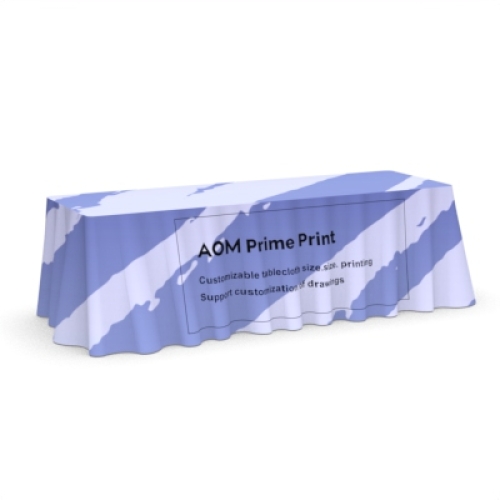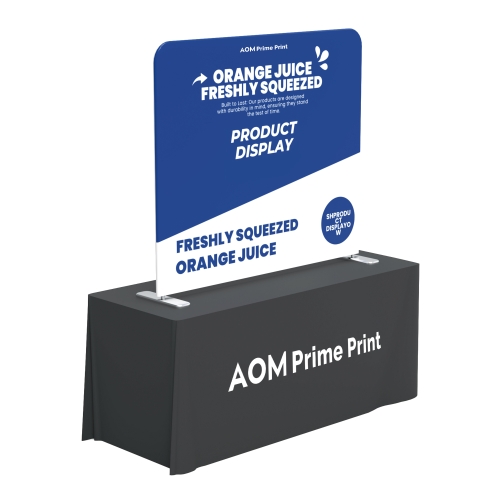The Advantages of Trade Show Marketing and Strategies for Business Growth
December 23rd 2024
In today's highly competitive business environment, companies are constantly seeking effective ways to promote their products, increase brand awareness, and establish connections with potential customers. Trade show marketing is a powerful tool that offers companies, regardless of their size, significant opportunities. By participating in industry-related trade shows, businesses can showcase their products and services, build brand recognition, gain market insights, and expand their professional networks. In this article, we will explore the multiple advantages of trade show marketing and discuss how to maximize its potential.
1. Direct Access to a Targeted Audience
One of the primary advantages of trade show marketing is the ability to connect with a large, targeted audience. Unlike traditional advertising methods (such as TV, radio, or print ads), trade shows ensure that your marketing efforts reach individuals and businesses who are genuinely interested in your products or services. Attendees at trade shows are typically professionals and decision-makers within a specific industry, making these events an ideal venue for businesses to engage with potential clients, partners, and investors.
For small and medium-sized enterprises (SMEs) with limited marketing budgets, trade shows are especially valuable. These businesses often can't afford the high costs associated with other forms of advertising, such as TV or print campaigns. Trade shows provide a cost-effective way to showcase products, interact with potential customers, and gather immediate feedback—all in a single, high-impact event.
2. Enhancing Brand Awareness and Credibility
Trade shows offer an excellent opportunity for businesses to increase their brand visibility and establish credibility. By participating in these events, companies can present their products and services in a highly professional setting, demonstrating their expertise and leadership in their respective industries. This interaction helps build trust with potential clients, solidifying the company's position as a credible and reliable player in the market.
In addition to showcasing products, businesses can use trade shows to communicate their values and industry knowledge. This face-to-face interaction allows companies to establish deeper relationships with attendees, which can result in long-term loyalty and brand advocacy. The exposure a business gains at a trade show can lead to greater recognition within the industry, helping to attract new clients and partners in the future.
3. Creating Business Opportunities and Expanding Networks
Another significant benefit of trade show marketing is the ability to generate business opportunities and expand your professional network. Trade shows are not just about showcasing products—they are also ideal environments for forging valuable connections. At these events, companies can engage with potential customers, suppliers, distributors, and even competitors, which can open the door to new partnerships and collaborations.
For businesses, the ability to network directly with key stakeholders can be a game-changer. Trade shows allow companies to build relationships with individuals who may not have been reachable through traditional marketing channels. These new contacts can lead to partnerships, joint ventures, and new business avenues, helping the company expand its reach and grow its operations.
4. Gaining Market Insights and Analyzing Competitors
Trade shows also serve as a valuable platform for businesses to gain insights into industry trends and monitor the competitive landscape. By attending these events, companies can observe their competitors' offerings, marketing strategies, and customer reactions, which can provide critical information to shape their own business strategies.
The direct engagement with potential customers at trade shows also provides an opportunity to gather feedback on products or services in real-time. This feedback is invaluable in understanding consumer preferences, addressing concerns, and identifying potential areas for improvement. Through these insights, companies can fine-tune their products and marketing efforts to better meet the needs of their target market.
5. Testing New Products and Innovations
Trade shows provide businesses with a low-risk environment to test new products and innovations before launching them into the broader market. Companies can showcase their latest offerings and receive immediate feedback from attendees, including potential customers and industry experts. This direct feedback helps businesses gauge market interest and refine their products accordingly.
Testing new products at trade shows also allows companies to assess the market’s reception before committing significant resources to full-scale production. If a product generates significant interest at a trade show, it increases the likelihood of success in the broader marketplace, reducing the risk of failure and helping businesses make informed decisions.
6. High-Quality Lead Generation
While the costs of participating in trade shows can be significant, the potential return on investment is considerable. Many businesses find that trade shows lead to high-quality leads—individuals who are already interested in their products or services and who are ready to make purchasing decisions. The face-to-face nature of trade shows allows businesses to engage with these leads more effectively and address their specific needs and concerns.
Furthermore, businesses can use trade shows to shorten their sales cycle. With immediate access to potential customers, companies can demonstrate their products’ unique features, answer questions, and overcome objections in real time, increasing the likelihood of converting leads into customers.
Maximizing the Benefits of Trade Show Marketing
To make the most of trade show marketing, businesses need to have a well-planned strategy. Here are some key tactics to help maximize the impact of trade show participation:
-
Identify Your Target Audience: Choose trade shows that align with your industry and target market to ensure you're reaching the right people. Research the event’s attendee demographics and make sure the audience fits your customer profile.
-
Design an Engaging Booth: A well-designed booth that effectively showcases your brand and products is crucial. An eye-catching, professional booth will draw attention and encourage visitors to engage with your company.
-
Engage Actively with Attendees: Actively engage with visitors by offering product demonstrations, answering questions, and sharing industry knowledge. Personal interactions can build stronger relationships and increase brand loyalty.
-
Collect Lead Information: Use trade shows as an opportunity to collect leads and customer information. Follow up with leads promptly after the event to turn them into actual sales.
-
Conduct Competitive Analysis: Trade shows allow businesses to assess their competitors’ strengths and weaknesses. Observe how your competitors present their products and interact with customers, and use this information to refine your own strategies.
-
Post-Event Marketing: After the event, ensure you continue to nurture the relationships you’ve established. Follow up with leads and use email marketing, social media, or phone calls to convert prospects into customers.
In conclusion, trade show marketing is a powerful tool for businesses looking to increase brand awareness, engage with potential clients, build professional networks, and gain valuable market insights. The unique combination of face-to-face interactions, real-time feedback, and direct access to decision-makers makes trade shows an invaluable marketing platform. While the investment in trade shows can be substantial, the potential returns, in terms of sales, partnerships, and brand visibility, often far outweigh the costs.
As digital technology continues to evolve, virtual trade shows are also becoming a viable option, further expanding the reach of trade show marketing. This new format allows businesses to connect with a global audience and explore new international markets. In the future, trade shows—both physical and virtual—will continue to be a key component of any comprehensive marketing strategy, helping companies grow and thrive in an increasingly competitive global marketplace.













